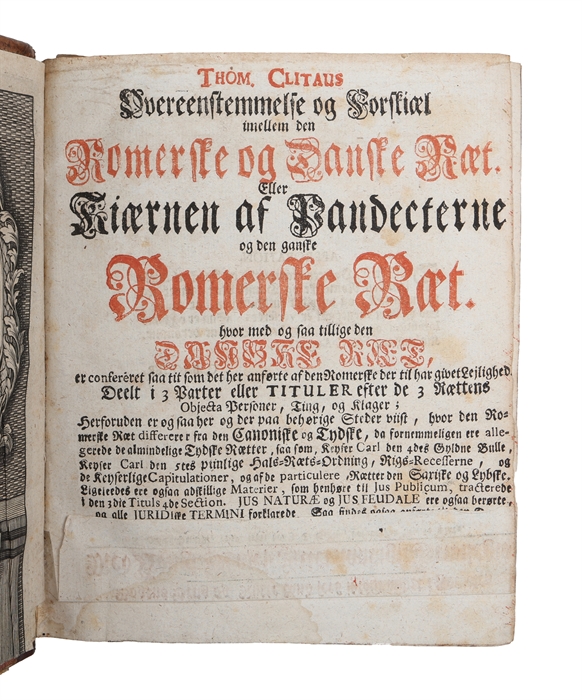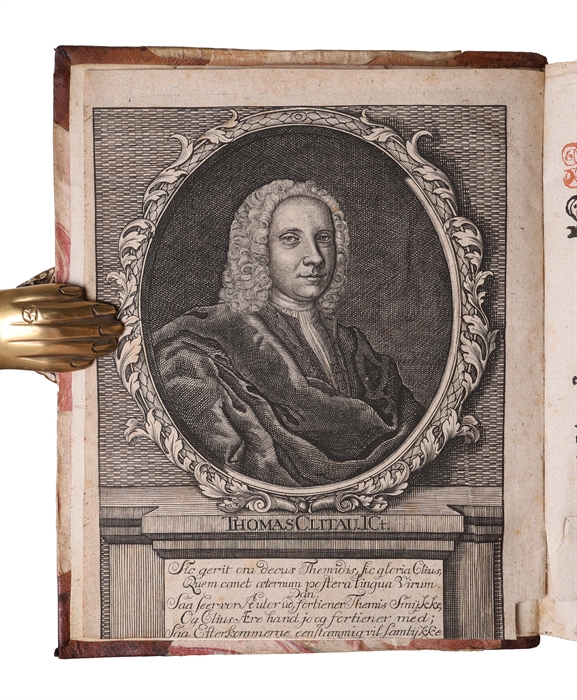FIRST DANISH WORK ON ROMAN LAW
CLITAU, THOMAS.
Overeensstemmelse og Forskiæl imellem den Romerske og Danske Ræt.
Kjøbenhavn, Groth, 1736.
4to. In contemporary half calf with three raised bands. Binding with wear and small paper-label pasted on to top of spine. A few leaves brownspotted but internally generally nice and clean. (8), 8, 677, (48) pp. + frontispiece and 1 folded table (included in the pagination).
The rare first edition of Clitau’s seminal work, being the work Danish work on Roman Law - Both in content and in timing, the work marks a turning point in Danish legal scholarship. Clitau here compared Roman and Danish law and extended his analysis to include Lübeck law, public law, feudal law, as well as German, Saxon, and natural law (ius naturae), along with criminal law. His book continued the scholarly project initiated by Weghorst and stands as the first comprehensive work of comparative law in Denmark that systematically engaged with Danish legal tradition. He argued that the Institutiones framework was the most suitable method for organizing legal knowledge. Nonetheless, he explained that he had chosen not to interpret Roman law through Danish law or vice versa. Had he taken Danish law as the foundation, he contended, substantial parts of Roman jurisprudence — such as theories of legal interpretation, legal taxonomy, and general personal rights — would have been excluded, as Danish law lacked direct equivalents. Conversely, he saw little value in including uniquely Danish legal provisions (e.g., those concerning hunting rights or the status of peasants) where no Roman parallels existed. In such cases, he remarked, he would have been limited to merely citing “the bare words of the law, which any reader can find in the Danish Law Book”—an exercise, he argued, of little scholarly use. This admission reflects not only Clitau’s ambivalence toward explicating native law, but also a broader misconception of the time—namely, the belief that the clear language of Danske Lov required no interpretation. Clitau's methodological innovation lay in his reorganization of the Corpus Juris Civilis according to the tripartite division of Personae, Res, and Actiones. He systematically arranged all legal material found in the Digest and Pandects under these headings—an approach that, as far as we know, was unprecedented. (see Björne, PATRIOTER OCH INSTITUTIONALISTER, rättsvetenskapens historia)
Biblioteca Danica I, 650
Order-nr.: 62252



